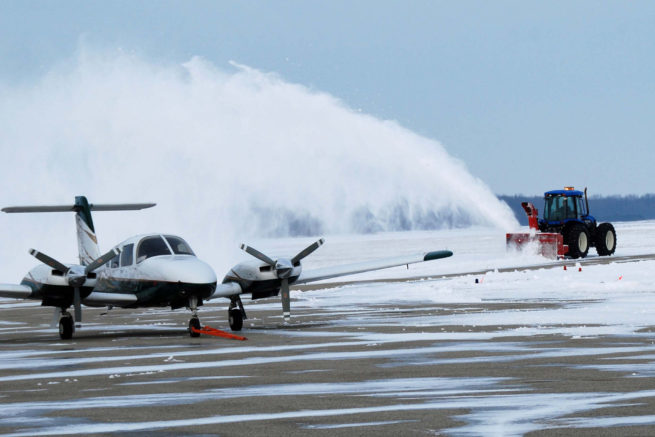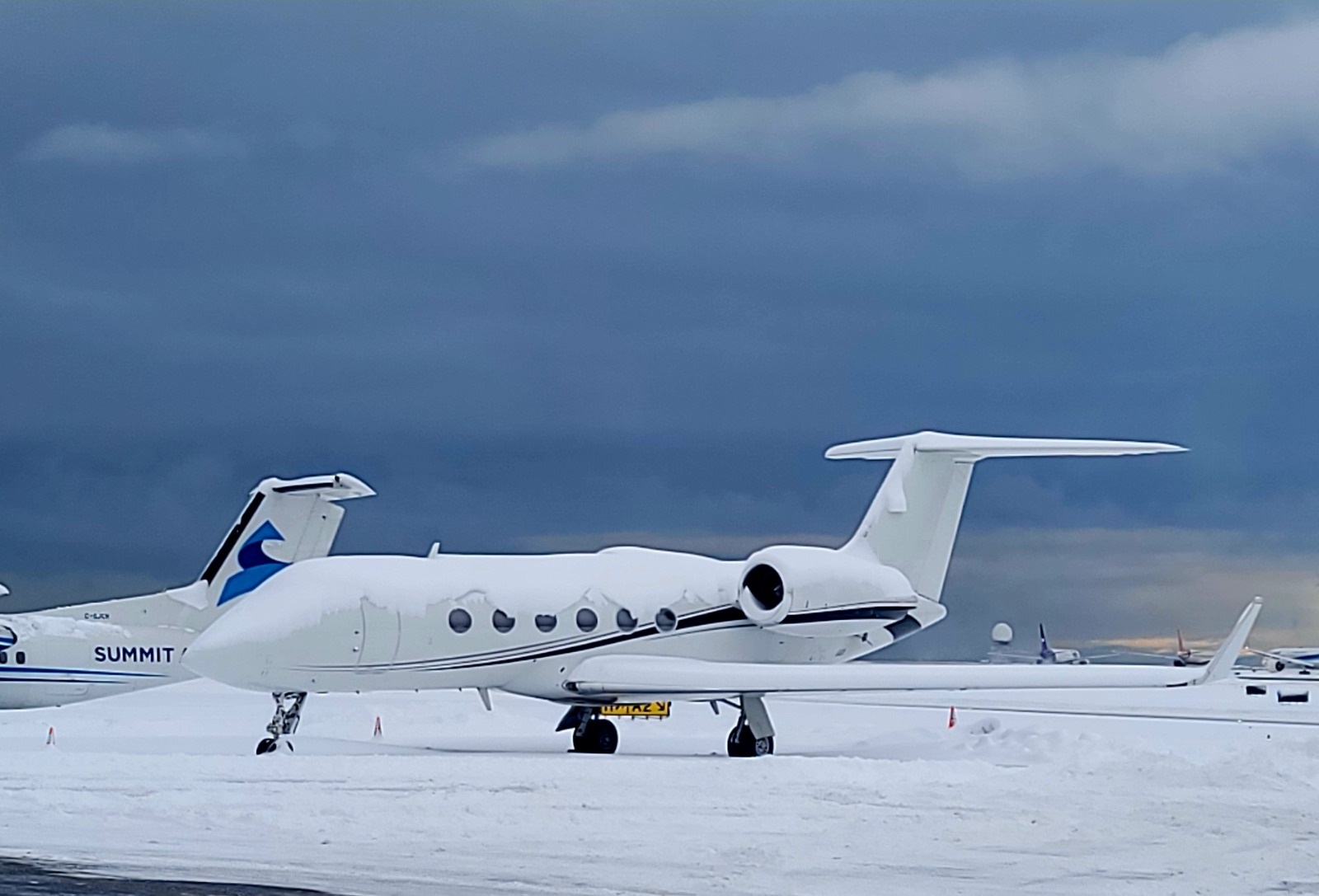As the seasons change throughout the year, and as our private air charter passengers fly into regions of the globe that are typically on the colder side, the topics of weather, air traffic, and de-icing & hangar space begin to come up more and more.

Most commonly during these periods, the focuses of de-icing private jets and the utilization of aircraft hangars are at the top of the list. We wanted to share some information in an effort to have our private charter clients prepared for these situations.
Our first priority is passenger safety. If you have spoken with us on the phone, you will hear us mention this over and over.
With that in mind, the private air carriers we select to work with for your trips are some of the top private aviation companies in the world, and they find it important to stick to the F.A.A. rules and regulations. In most cases they have internal safety requirements that are even more stringent than what may be required by law. The de-icing of a private charter aircraft is crucial for air charter safety.
If you have a private flight scheduled that will be departing or arriving into an airport which is effected by inclement weather, such as temperatures below freezing, snow/hail storms, than you may find this information important. We do suggest familiarizing yourself with the process of de-icing, along with the reasoning behind it, and how this could potentially affect your flight, and the total cost of your trip.
De-Icing Summarized
When looking at a plane, the first things you notice are the massive wings that extend from the fuselage, along with the enormous tail on the rear. The wings and tail of a plane are engineered in a precise shape and size to provide proper lift during take-off.
If there is any alteration in the shape of the wings and/or tail, this can cause issues during departure, and could hinder the aircraft’s ability to take-off safely. The process of de-icing, along with the supplies used to remedy these weather created problems will remove the build-up of any ice and snow accumulated.
In addition to the wings and tail, the de-icing process will also focus on the front of the aircraft, specifically the nose of the plane, where many of the vital parts of the radar system are positioned.
There is no way to predict how weather will affect your trip, nor is there any way to predict whether deicing will be needed for your flight until the pilots do their pre-flight safety checklist and their aircraft walk-around. If the pilots do in fact notice any icing or build-up, they will deem the plane to be unsafe to depart until the ice/buildup is removed using deicing solution.
Costs Involved With De-Icing
The cost of de-icing a private jet is billed (at cost) after the charter flight has been completed. The pricing for de-icing a plane varies based on many factors, including which state/city the airport is in, which type of de-icing fluid is needed to dissolve the ice, and how much fluid is needed based on the aircraft and weather conditions.
Deicing solution is only good for a limited time period after it is applied to the plane. Any delays after the solution is applied can potentially result in a need for the solution to be applied again. The entire process of de-icing will usually take 10-30 minutes, depending on the size of the aircraft and which level of deicing solution is needed.
We do suggest planning to arrive at the airport at least 30 minutes prior to your scheduled departure so this does not create any additional delays for your trip. The fees associated with de-icing are never included in charter quotations, and are billed by the aircraft handling service or FBO (Fixed-Base Operator), and are then passed on to the passengers at cost.
Renting Hangar Space
In many cases, when there is enough warning of inclement weather, we can arrange for a hangar space to store the aircraft until your flight is ready. Hangars are generally heated and will help to mitigate the need for any de-icing. However, in some cases the cold weather will still impact the aircraft and can potentially still need de-icing.

When setting up flights, if we are able to arrange for the aircraft to be stored out of the elements to avoid the time and money spent by de-icing a private jet, we will in fact do so. Hangar space is always limited and first-come, first-serve. Renting a hangar prior to your flight is also at an additional cost, which is once again billed by the FBO, and passed on to the client. Hangar fees are not included in your charter quote.
What Is De-Icing Solution Made Of
Deicing solution is a heated mixture of chemicals such as propylene glycol and water. The solution is sprayed onto the private jets and turbo props at a temperature between 150 and 180 degrees, using high-pressure which helps to melt and remove built-up of ice on the aircraft wings, nose, and tail. The most common types of deicing solutions are called “Type I” and “Type IV”. These both aid in removing ice, and adding an anti-ice film to the plane.
Contact Us
Send us an e-mail or give us a call at (888-987-JETS) to speak to one of our private jet charter brokers about the process of de-icing private aircraft for charter flights.

